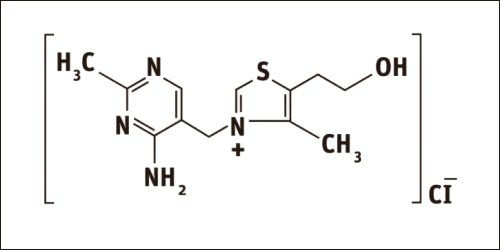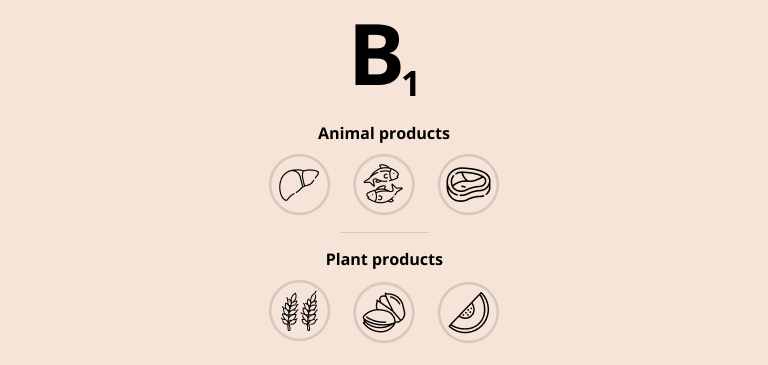Vitamin B1
Thiamine
Year of discovery: 1897 | Christiaan Eijkman
Thiamine is a sulfur-containing vitamin that is involved in energy metabolism, converting carbohydrates, lipids and proteins into energy. Thiamine also plays a key role in nerve and muscle activity.
Main sources of vitamin B1
Offal (liver, kidney, heart), fish, meat (pork), whole grains, green leafy vegetables, asparagus, eggplant, fruits, legumes (beans and lentils), nuts, soy milk, pumpkin, beer yeast.
Bioavailability of vitamin B1
There is no data on the bioavailability of vitamin B1, but we do know that its levels in food are very sensitive to heat, cooking time and length of storage. Vitamin B1 is also lost in the milling process, in which the bran layer and part of the germ leaf, which contains the vitamin, are removed from the grain.
Risks associated with insufficient or excessive intake of vitamin B1
People whose diets consist mainly of refined cereals (mainly milled flour and polished rice) are at risk of thiamine deficiency. The risk of deficiency is lower if food manufacturers enrich refined grains with vitamin B1. The clinical condition of vitamin B1 deficiency is called beri-beri. It is a condition that still occurs in Southeast Asia. During beri-beri, there is damage to the nervous system, characterized by weakness in the muscles of the arms and legs, or damage to the cardiovascular system, which is characterized by dilated blood vessels, causing the heart to work harder, and salt and water retention in the kidneys, leading to edema. No adverse effects have been associated with excessive thiamine consumption.




